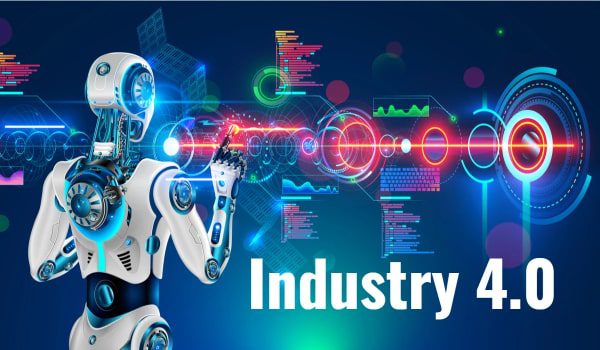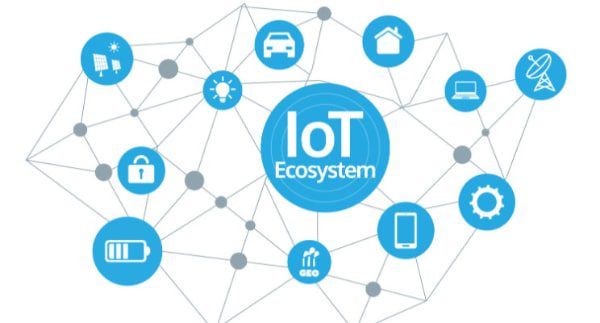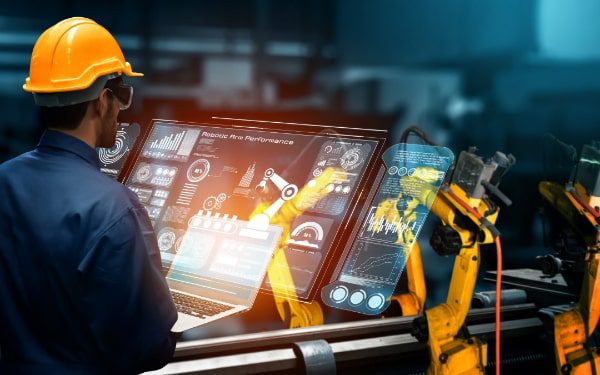Predictive analytics makes its entry as a strong driver of innovation, changing the industrial outlook into one where data-driven insight precedes trends, optimizes processes, and enables decision-making to stay ahead in an increasingly competitive marketplace.
Predictive analytics, from smart factories to advanced supply chains, lets organizations anticipate and avoid problems well before they happen, thereby making operations more effective and affordable as productivity goes up. This article discusses how predictive analytics transforms Industry 4.0.
Manufacturing Industry 4.0: The Revolution of Smart Manufacturing
What is Industry 4.0 in Manufacturing?
Industry 4.0-manufacturing is smart; the manufacturing of products is completely digitized. It includes real-time decision-making, productivity increase, flexibility, and agility, finally changing the pattern of doing business: producing, refining, and selling a product.
IIoT uses intelligent machines and real-time analytics to capture the value of data traditional machines have been generating in industrial settings for years. The whole concept of IIoT is based on the fact that smart machines are much better at capturing data and analyzing it in real time, not only than their human counterparts but also at relaying vital information quicker to help speed up and improve business decisions more accurately.
Key Features of Industry 4.0 in Manufacturing
IoT, cloud computing, data analytics, Artificial Intelligence, and Machine Learning are a few of the latest technologies that manufacturers in both production and operation will embrace.
These digital advances allow more automation, predictive maintenance, and self-optimizing processes to unlock unparalleled efficiency and responsiveness to customer demands.

Key Features of Industry 4.0 in Manufacturing
IoT technologies implemented in smart factories not only increase productivity but also enhance the quality of the product. Replacing manual inspection with AI-driven insight reduces errors, thereby saving costs along with time consumption.
Even quality control teams can use a simple smartphone connected to the cloud and monitor manufacturing from any place. Machine learning algorithms enable immediate detection of problems that would keep away expensive repairs in the later phase of the production cycle.
Data Predictive Analytics in Manufacturing: A Game-Changer
How Predictive Analytics is Used in Manufacturing
Predictive analytics tools examine historical data and real-time information to predict future outcomes in order for organizations to make better-informed decisions to drive profitability. Past data will reveal patterns of the production process to manufacturers that will lead to better decisions about demand, cost management, quality control, and operational efficiency.
Predictive analytics has also become an important tool in process optimization and future growth in view, especially within the fast-paced and competitive manufacturing industry. More so, AI-driven predictive analytics solutions are truly priceless to manufacturers, helping speed up time-to-market with new products while optimally running operations in order to keep one’s competitive advantage intact.
Benefits of Data Predictive Analytics in Manufacturing
- Reduced Downtime & More Machine Uptime: By predicting, through predictive analytics, the problems that are likely to occur, sudden machine failures can be prevented-assuring more continuous production.
- Optimized production schedules and better resource allocation mean the approach will further enable the mechanic to schedule and manage resources more appropriately, hence assuring smoother operations.
- Improved Quality Control: Detecting defects in the process of manufacturing quite in advance enables corrective steps that lead to an overall improvement in the quality of the products while reducing waste generation.

Benefits of Data Predictive Analytics in Manufacturing
Predictive Analytics in IoT: Transforming the Manufacturing Industry
Role of IoT in Predictive Analytics for Manufacturing
The IoT technology forms the backbone of predictive analytics. Indeed, IoT allows the capture of real-time data emanating from machines and equipment used along the value chains of manufacturing. The IoT sensors embedded into various assets gather critical data on the performance of the machines, ambient conditions, and metrics of operations.
All this information feeds into predictive analytics algorithms that can forecast the future needs of maintenance, find early portents of wear and tear in equipment, and work out how best to deploy machines. With these insights, manufacturers can improve production efficiency, reduce unexpected downtime, and experience smoother productions across the value chain.
Examples of IoT-Driven Predictive Analytics
- IoT sensors monitor the constant health of machinery for any vibration, temperature variations, and other signals that might suggest a near failure. Predictive analytics takes this a step further by forecasting when the maintenance or repairs are required. This prevents unexpected failures leading to costly downtime, hence prolonging equipment life.
- Environmental Condition Analysis to Optimize Production: The factors that involve the environment, such as temperature and humidity, can indeed have an impact on the quality of the products being manufactured and also the effectiveness of the production process itself. IoT devices observe all these parameters in real time, and predictive analytics can make changes to the production process to maintain the best conditions, enhancing product consistency and reducing the possibility of defects.
- IoT-enabled sensors monitor supply chain performance for improved logistics and inventory management. Predictive analytics can optimize the supply chain performance of manufacturers through advanced analysis of data on inventory levels, transportation times, and delivery conditions to ensure timely deliveries at the right quantity and quality, thus preventing overstocking or stockouts, adding to better logistics and inventory management.
The integration of IoT and predictive analytics into manufacturing functions not only smoothes out the process but also enables companies to make wiser, more informed decisions based on data for operational success.

Role of IoT in Predictive Analytics for Manufacturing
AI Predictive Analytics Examples in Manufacturing
AI-Powered Predictive Maintenance
Advanced machine learning algorithms with AI study all the historical and real-time data of machines to calculate the time when the failure of machines will occur. This proactive way of dealing with machines can enable the manufacturer to schedule maintenance interventions and hence reduce unplanned downtime by a considerable amount along with increasing the overall equipment effectiveness-OEE.
AI for Quality Control in Manufacturing
AI-driven predictive models can help detect potential product defects early in the course of production. These models analyze sensor data and historical records of quality to flag products that have a high probability of defects for intervention before they go into the market.
AI in Supply Chain Optimization
AI predictive analytics thus enables manufacturers to predict demand more accurately, optimize inventory levels, and manage streamlined logistics operations. This indeed leads to reduced inventory costs, improved order fulfillment rates, and higher customer satisfaction.
Industrial Predictive Maintenance: Increasing Efficiency and Reducing Costs
What is Predictive Maintenance in Industry 4.0?
Predictive maintenance uses data and analytics to monitor equipment health and predict failures before they occur. By analyzing historical maintenance data, sensor readings, and other relevant information, manufacturers can identify patterns and anomalies that indicate impending equipment failure.
Key Benefits of Industrial Predictive Maintenance
- Increased machine uptime and production continuity: Proactive intervention at probable issues can reduce downtime for manufacturers and ensure that production is not disturbed.
- Smaller repair and maintenance bills: Through predictive maintenance, it is possible to optimize the maintenance schedules by prioritizing the necessary repairs, which in turn reduces the overall maintenance costs.
- Safer environment: This might also help in preventing unexpected failure of equipment that reduces workplace safety and minimizes accidents.

Key Benefits of Industrial Predictive Maintenance
Data-Driven Decision-Making in Business: Enhancing Manufacturing Operations
How Data-Driven Decision-Making Improves Manufacturing
Data-driven decision-making allows the manufacturer to make educated choices by relying on real-time data and analytics. By the power of data insights, manufacturers can sort out roadblocks in production processes and thereby help reduce costs for better overall operational efficiencies.
Examples of Data-Driven Decision-Making in Manufacturing
- Optimization of Production Line: Real-time data regarding machine performance, energy consumption, and quality of product can be put to use for optimizing the configuration of a production line by detecting the presence of a bottleneck.
- Supply Chain Strategy Alignment: This would enable manufacturers to make fact-based decisions regarding the optimization of their supply chains by analyzing demand forecasts, inventories on hand, and supplier performance.
- Workforce Productivity Improvement: Data-driven insights might be used by manufacturers to train workers with relevant training, handle effective work scheduling, and drive improved employee engagement.
The Future of Industry 4.0: What’s Next for Smart Manufacturing?
AI and Machine Learning as Drivers of Future Innovation
The era of manufacturing keeps getting disrupted with advancements in AI and machine learning, which allow for advanced automation, predictive analytics, and intelligent decision-making. This will continuously improve as these technologies advance, enabling manufacturers to optimize and improve their operations even further-to unparalleled levels of efficiency.
The Role of Digital Twins in Future Manufacturing
One of the critical enablers for the future of manufacturing is going to be digital twins. Simulations and optimizations of processes in a virtual environment will be carried out by manufacturers. This can be done to find out potential issues, test new strategies, and reduce the possibility of costly failures.

The Role of Digital Twins in Future Manufacturing
Sustainability and Industry 4.0
Sustainability will be driven by Industry 4.0 technologies that include energy-efficient manufacturing processes, less waste, and better usage of resources. With data-driven insights, manufacturers can consider changes in those directions toward more sustainable practices, reducing their environmental impact.